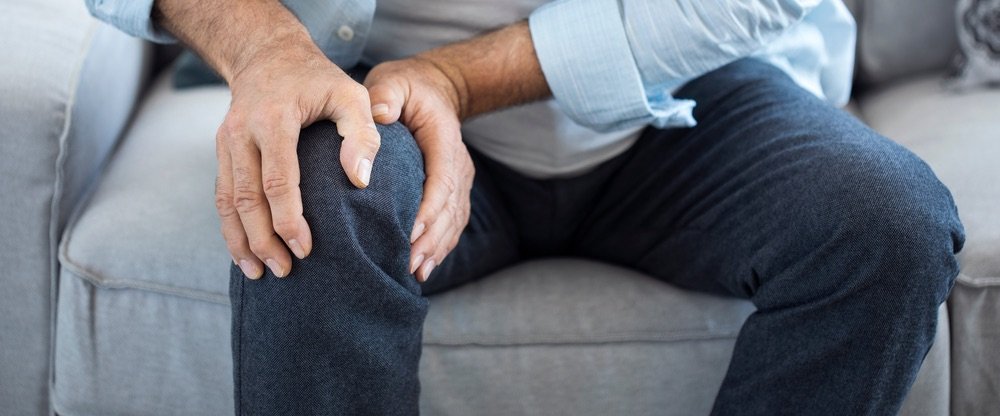Pain in your knee is hard to ignore.
Over time, as it gets worse, it can impact your ability to walk, climb stairs, and even sit comfortably. Often people avoid going to the doctor to have their knee examined because they’re concerned it will mean surgery. While certain situations do call for knee surgery, a lot of patients with knee pain can be treated with rest, ice, and chiropractic care.
Common Conditions that Cause Knee Pain
Chiropractic Treatments for Knee Pain
Chiropractic care can be a very effective option for treating many types of knee pain. Often times it provides relief without surgery. A growing list of research studies and reviews demonstrate that the services provided by chiropractors are clinically effective, safe, and affordable.
At Village Chiropractic we use a few different methods for treating knee pain. Depending on the condition of the knee and the type of injury.
Select one of the treatments below that are available at Village Chiropractic:
Topics on Knee Pain
Common Knee Pain Conditions

Osteoarthritis In The Knee Joint
Sometimes called degenerative arthritis, osteoarthritis is very common. The cartilage in the knee joint gradually wears away, resulting in bone rubbing on bone. And that rubbing causes a lot of pain that progressively gets worse as more cartilage wears away.
Osteoarthritis is usually found in the joints as people age. That’s why it’s more common in people over the age of 50. However, there are other things that can increase your risk of developing this condition, including:
Gender (women are more likely to develop osteoarthritis than men)
Being obese
Past knee joint injuries
Genetics — some people genes make them more likely to develop arthritis
Bone deformities
Metabolic diseases such as diabetes and hemochromatosis
A knee joint affected by arthritis is usually painful and inflamed. Generally, the pain develops gradually over time, although sudden onset is also possible. Common symptoms of osteoarthritis of the knee can include:
Stiffness and swelling that makes it difficult to bend and straighten the knee
Pain and swelling that is worse in the morning or after sitting/resting
Bursts of pain that occur after vigorous activity
A feeling of “locking” or “sticking” during movement, accompanied by clicking, snapping, or grinding sounds
Weakness in, or buckling of, the knee
Soreness or a dull ache during rainy weather
Related Reading:
How Chiropractic Care Helps Treat Knee Pain From Arthritis
Meniscus Tear
The meniscus is a piece of cartilage between your femur (thighbone) and tibia (shinbone). Each of your knees has two menisci — C-shaped pieces of cartilage that act as shock absorbers in the knee. Forming a cushion between the shinbone and the thigh bone, they help spread out the forces that are transmitted across the joint.
Meniscal tears can occur at any age, but the causes are somewhat different for each age group:
Meniscus tears in people under the age of 30 usually occur as a result of an injury. Often times, it is more likely to be caused by a sports activity.
Meniscus tears in people older than 30 often occur due to degeneration, which simply means that the meniscus grows weaker with age. A weakened meniscus means that even a minor injury or a twist at the wrong angle can cause a tear.
The most common symptom of a torn meniscus is pain, which may be felt along the edge of the knee joint closest to where the meniscus is located. Sometimes, the pain may be more vague and involve the whole knee.
Other symptoms of a meniscus knee injury may include:
Feeling a “pop” when the injury occurs
Stiffness and swelling due to the accumulation of fluid inside the knee joint (sometimes called water on the knee)
Inability to completely straighten out the knee (known as locking of the knee)
Related Reading:
Can A Meniscus Tear Be Treated By A Chiropractor?
Ligament Tear
There are four major ligaments that help stabilize the knee joint so it can function normally: the Medial Collateral Ligament (MCL), Lateral Collateral Ligament (LCL), Posterior Cruciate Ligament (PCL), and the Anterior Cruciate Ligament (ACL). When the knee is pushed beyond its normal limit, a tear or multiple tears of the ligaments can occur.
Ligament tears usually occur when the lower leg is forced sideways, either toward the other knee (medially) or away from the other knee (laterally). Knee ligament damage typically occurs from sports injuries or a fall. Although rare, ligament tears can happen at work or during everyday activity.
Symptoms of a torn knee ligament may include:
A loud snap or pop sound at the time of injury
Loss of range of motion
Discomfort while walking
Pain at the sides of your knee, especially when putting weight on that leg
Swelling throughout the knee which makes it difficult to bend the knee
Instability or the feeling that your knee is giving way and not supporting your body weight
Chondrosis
Chondrosis, more commonly called chondromalacia patella or “runners knee,” refers to the softening and damage to the cartilage on the back of the patella (kneecap). This condition is common among young, athletic individuals, but may also occur in older adults who have osteoarthritis of the knee.
The most common cause of chondromalacia patella is overuse in training. However, there are other contributing conditions such as:
Repeated bending of the knee
Knee malalignment (when the knee is not aligned properly in the leg axis)
Flat feet (overpronation)
Being overweight
Chondromalacia patella will often cause symptoms of pain behind or around the knee cap – most often when the knee bends during running, kneeling, lunging, climbing and walking down stairs.









